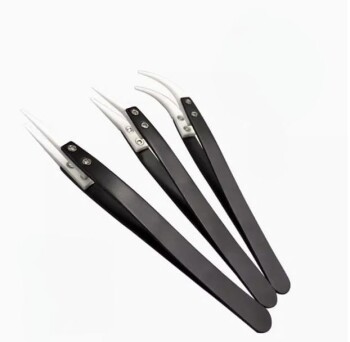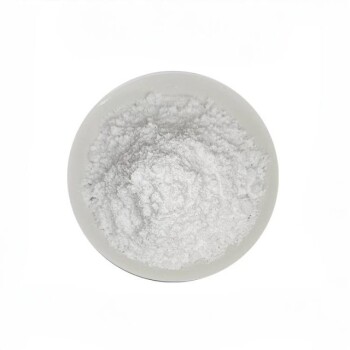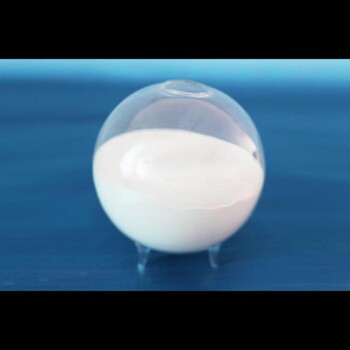Engineering ceramics are integral to high-performance applications across industries such as aerospace, automotive, and electronics. Our range includes Alumina Zirconia Special-Shaped Parts, Silicon Carbide Ceramic Plates, Zirconia Ceramic Plates, and more. These materials offer exceptional strength, wear resistance, and high-temperature stability, making them ideal for demanding environments.
Toggle Categories
Get Instant Support
Choose your preferred way to connect with our team
-
Get Free Quote Fill out form for detailed pricing
-
Send Email Detailed inquiry support
-
WhatsApp Quick mobile chat
Response Time
Within 8 hours on working days, 24 hours on holidays
engineering ceramics

Precision Machined Zirconia Ceramic Ball for Engineering Advanced Fine Ceramics
Item Number : KM-G03

Engineering Advanced Fine Ceramics Head Tweezers with Pointed Elbow Zirconia Ceramic Tip
Item Number : KM-C015

Advanced Engineering Fine Ceramics Low Temperature Alumina Granulation Powder
Item Number : KM-P03

High Purity Alumina Granulated Powder for Engineering Advanced Fine Ceramics
Item Number : KM-P02

Advanced Engineering Fine Ceramics Aluminum Nitride (AlN) Ceramic Sheet
Item Number : KM-DG05

Silicon Carbide (SIC) Ceramic Plate for Engineering Advanced Fine Ceramics
Item Number : KM-DG03

Silicon Carbide (SIC) Ceramic Sheet Wear-Resistant Engineering Advanced Fine Ceramics
Item Number : KM-DG02

Zirconia Ceramic Gasket Insulating Engineering Advanced Fine Ceramics
Item Number : KM-G04

Advanced Engineering Fine Ceramics Boron Nitride (BN) Ceramic Parts
Item Number : KM-P01

High Temperature Alumina (Al2O3) Furnace Tube for Engineering Advanced Fine Ceramics
Item Number : KM-C06

Advanced Engineering Fine Ceramics Alumina Ceramic Saggar for Fine Corundum
Item Number : KM-C05
Advanced Engineering Ceramics for Diverse Applications
Engineering ceramics are a class of advanced materials known for their exceptional mechanical, thermal, and electrical properties. These ceramics are designed to withstand extreme conditions, making them indispensable in industries such as aerospace, automotive, electronics, and more. Our engineering ceramics are crafted with precision to meet the stringent demands of modern technology.
Key Characteristics of Engineering Ceramics
- High Strength and Toughness: Our ceramics, such as Zirconia and Silicon Carbide, offer superior strength and toughness, ensuring durability in high-stress environments.
- Wear Resistance: Designed to resist abrasive wear, these materials are ideal for applications requiring prolonged operational life.
- High-Temperature Stability: Withstanding extreme temperatures, our ceramics maintain their structural integrity and performance in hot environments.
- Electrical Insulation: Many of our ceramics provide excellent electrical insulation, making them suitable for electronic components and systems.
- Chemical Resistance: Our materials exhibit high resistance to chemical attack, ensuring longevity in corrosive environments.
Applications of Engineering Ceramics
- Aerospace: Used in engine components, thermal protection systems, and structural parts.
- Automotive: Applied in engine parts, brakes, and sensors for enhanced performance.
- Electronics: Essential in substrates, insulators, and heat sinks for advanced electronic devices.
- Medical: Utilized in implants and surgical tools for their biocompatibility and strength.
Customization and Professional Services
At Kintek Solution, we pride ourselves on our ability to offer customized solutions tailored to your specific needs. Our team of experts works closely with you to develop engineering ceramics that meet your exact specifications. Whether you require special shapes, sizes, or properties, we are committed to delivering products that exceed your expectations.
For more information or to discuss your specific requirements, please contact us. Our dedicated team is ready to assist you in finding the perfect engineering ceramic solution for your project.
Why Choose Our Engineering Ceramics?
- Quality Assurance: Our products undergo rigorous quality control to ensure they meet the highest standards.
- Innovative Solutions: We continuously innovate to bring you the latest advancements in ceramic technology.
- Customer-Centric Approach: Your satisfaction is our priority. We work closely with you to understand and fulfill your needs.
- Sustainability: We are committed to sustainable practices, ensuring our products are environmentally friendly.
In conclusion, our engineering ceramics are designed to provide superior performance in the most challenging environments. With a focus on quality, innovation, and customer satisfaction, we are your trusted partner for advanced ceramic solutions. Explore our range today and discover how our engineering ceramics can enhance your applications.
For inquiries or to place an order, please contact us or visit our website for more details. We look forward to serving you with our top-quality engineering ceramics.
FAQ
What Are Engineering Ceramics?
What Are The Main Types Of Engineering Ceramics?
What Are The Applications Of Engineering Ceramics?
How Do Engineering Ceramics Differ From Traditional Ceramics?
What Are The Advantages Of Using Alumina Ceramics?
Why Are Zirconia Ceramics Preferred In Certain Applications?
What Makes Silicon Carbide Ceramics Suitable For High-temperature Applications?
How Are Boron Nitride Ceramics Used In Electronics?
What Is The Manufacturing Process Of Engineering Ceramics?
Can Engineering Ceramics Be Customized For Specific Applications?
REQUEST A QUOTE
Our professional team will reply to you within one business day. Please feel free to contact us!
Related Articles

The Ceramic Paradox: Why the Best Way to Clean an Alumina Tube is Not to Clean It
Deep cleaning is often a symptom of process failure. Discover the engineering protocols to maintain alumina tubes, prevent thermal shock, and ensure longevity.

The Silent Vessel: Why the Material of Your Furnace Tube Defines Your Science
The tube furnace tube is not just a container; it is a boundary condition. Learn how choosing between ceramic, quartz, and metal defines your experimental limits.

The Invisible Architecture of Precision: Mastery Before the Current Flows
Achieve electrochemical accuracy by mastering the four pillars of preparation: rigorous inspection, cleaning, installation, and electrolyte management.

The Thermal Ceiling: Pushing 2200°C in Vacuum Environments
Discover how specialized vacuum furnaces achieve 2200°C+ through advanced graphite and tungsten elements. A deep dive into thermal engineering and material limits.

Entropy and the Alumina Tube: The Art of Precision Maintenance
Discover the disciplined approach to cleaning alumina furnace tubes. Learn how to prevent thermal shock, remove residue with acid, and extend equipment life.

The Architecture of Isolation: Anatomy of a Tube Furnace
Explore the layered engineering of a tube furnace. From alumina insulation to quartz reactors, understand how this "thermal sleeve" achieves precise isolation.

Your Induction Furnace Is Failing You. The Reason Isn't What You Think.
Struggling with inconsistent melts or high costs? The problem may be a fundamental mismatch in your induction furnace type. Learn to fix it.

Why Your Ceramic Furnace Tubes Keep Cracking—And How to Choose the Right One
Tired of failed experiments from cracked ceramic tubes? Learn the real reason it happens and how to select the correct material (Alumina, Quartz) for your lab.

Cracked Tubes, Contaminated Samples? Your Furnace Tube Is The Hidden Culprit
Frustrated by failed experiments? Learn why your furnace tube material—not your process settings—is the critical variable causing inconsistent results.

Why Your High-Temperature Furnace Elements Fail: The Critical Difference in Silicon Carbide
Furnace downtime from failing SiC heating elements costs time and money. Discover the critical material difference that ensures reliability in extreme applications.

How to Choose Crucible Materials That Prevent Chemical Degradation in Vacuum Induction Melting
Learn how to choose crucible materials for vacuum induction melting to prevent chemical degradation and optimize alloy purity. Essential guide for industrial applications.

Why Ultra-Low Temps are Non-Negotiable: The Science Behind Preserving Critical Biological Materials
Discover why ultra-low temperature freezers (-86°C) are vital for preserving cells, proteins, and vaccines. Learn the science behind ULT storage best practices.

PTFE gasket: an all-around solution for flange sealing
Polytetrafluoroethylene (PTFE) gaskets have become an ideal choice in the field of flange sealing due to their unique chemical stability and high temperature resistance.

Cryogenic Pulverization Technology and Its Applications
Explores the process, advantages, disadvantages, and applications of cryogenic pulverization in various fields.

Precision Ceramic Materials for Energy Conversion Applications
Overview of various ceramic materials used in energy conversion technologies, including heaters, piezoelectric ceramics, and solid oxide fuel cells.

Advanced Technologies for Precision Ceramics
Explores key technologies and preparation methods for precision ceramic components, highlighting their applications and challenges.

Precision Ceramics in Semiconductor Applications
Exploring the use of precision ceramics in semiconductor equipment, their properties, and manufacturing processes.

The 5 Hottest Advanced Ceramic Powders Currently Available!
An overview of the top 5 advanced ceramic powders: High Purity Aluminum Oxide, Boehmite, Aluminum Nitride, Silicon Nitride, and Spherical Alumina, highlighting their applications and market trends.

Mechanical Properties and Structural Enhancements of Ceramics
An in-depth analysis of the mechanical properties of ceramics, including strengths, weaknesses, and methods for improvement.

The Evolution and Strategic Importance of Advanced Ceramics
An in-depth analysis of the development, classification, and strategic importance of advanced ceramics in various industrial and technological fields.









